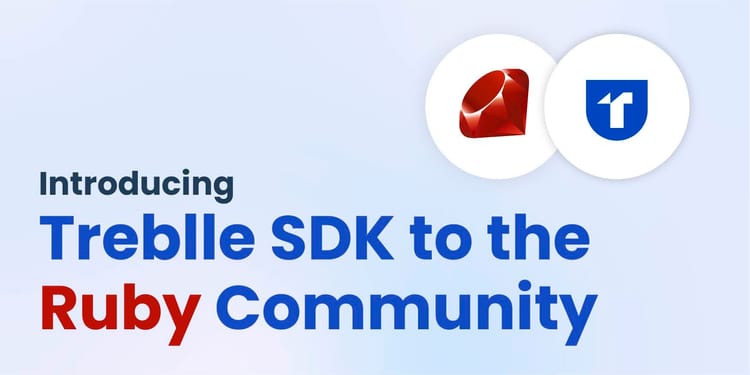In an era where software systems interconnect and collaborate seamlessly, the way we think about control and governance needs to change.
APIs (Application Programming Interfaces) continue to shape the tech landscape. They have opened up a world of unpredictable possibilities. Possibilities like:
- The fusion of a weather app with a calendar app, where real-time weather forecasts suggest outdoor plans
- The use of voice recognition APIs with smart home devices, allowing people to control their environments with voice commands,
- Or the integration of blockchain and cryptocurrency APIs that create decentralized applications (DApps) and revolutionary financial services, reshaping the way we transact and invest.
These are just a few examples. The possibilities are only limited by the creativity and innovation of developers and businesses.
The question then is: How can organizations maintain a grip on their software ecosystems while embracing the unpredictable possibilities that APIs bring?
Balancing control over software ecosystems with the possibilities that APIs offer is a big challenge for organizations. The complexity of integrating multiple APIs, ensuring security, and staying compliant with regulations can be overwhelming. Organizations must navigate dependencies on external APIs, allocate resources for management, and strike a delicate balance between innovation and system stability. On top of that, there is a human side where effective communication and collaboration are also crucial.
Enter API observability—the window into the heart of API interactions and behaviors. API observability offers insights that redefine control for modern software. This blog will give 6 ways observability will help solve the challenges of modern-day organisation governance. First, let’s explore what control means in the world of APIs.

Control in API Ecosystems
In the past, control over software systems meant centralized governance and strict oversight.
This centralized governance worked well when software systems were simpler and less interconnected.
For example, in a company, the IT department might have been in charge of all software decisions. They decided which software to use, and how it was used, and ensured that everyone followed the same rules and guidelines.
With the rise of APIs and the need for organizations to interact with various external systems and services, the old model of strict oversight became less effective. Control needed to be more distributed, collaborative, and often emergent.
Control in this context is not about rigid domination, but about orchestrating a harmonious symphony of interconnected parts. Here are 6 ways API observability provides the solution to rigid, out-of-date governance.

1. A Lens of Insight
API observability is the practice of monitoring, tracking, and gaining insights into API interactions and behaviors. Observability empowers organizations to peer into the intricate workings of their API ecosystems, offering real-time insights, metrics, and data.
These insights go deeper than monitoring, for example by understanding how APIs consume resources, organizations can optimize their cloud or infrastructure costs. If an API consumes excessive CPU or memory, organizations can fine-tune resource allocation to control costs while maintaining performance.
Like a conductor’s baton, API observability provides the means to lead, guide, and understand the complexities of an API-driven orchestra.

2. Control Through Transparency
A key part of maintaining control is transparency. Knowing what’s happening within a system at any given moment. API observability excels in this aspect by shedding light on the often-hidden interactions between APIs, services, and applications. Metrics, logs, and visualizations provide a clear view of the behavioral landscape, allowing organizations to make informed decisions and respond proactively to emerging issues.
Observability tools can provide real-time metrics on API response times, error rates, and usage patterns. For instance, if a particular API endpoint is consistently slow or generating errors, organizations can identify and address performance bottlenecks to enhance user experience.

3. Predictability in Unpredictable Systems
In the realm of APIs, unpredictability and emergence are constants. Yet, paradoxically, API observability introduces a level of predictability that enables organizations to regain control. By identifying anomalies, trends, and potential pitfalls through observability tools, organizations can implement preemptive strategies. This newfound ability to predict paves the way for maintaining stability and reliability in even the most unpredictable environments.
Observability allows organizations to track unusual API access patterns, helping to detect potential security breaches. For instance, if an API suddenly experiences a spike in unauthorized access attempts, it can trigger alerts, enabling timely security responses.

4. Mitigating Risks and Ensuring Reliability
Risk management is a cornerstone of governance, and API observability offers a powerful mechanism to identify vulnerabilities before they escalate. By closely monitoring performance metrics and trends, organizations can detect bottlenecks, vulnerabilities, and security threats early on. This proactive approach enhances reliability, preventing issues from affecting users and fostering an environment of trust.
When errors occur, observability tools offer detailed data about the circumstances surrounding the error. This helps development teams quickly identify and resolve issues. For example, if an API error is triggered by a specific user action, developers can pinpoint the problem and release a fix faster.

5. Balancing Flexibility and Governance
One of the challenges in modern software ecosystems is striking a balance between control and flexibility. APIs, by design, encourage flexibility and innovation, but unchecked freedom can lead to chaos.
API observability steps in as a harmonizing force, providing insights that allow organizations to maintain governance without stifling innovation. By providing insights into API usage and performance, organizations can identify opportunities for improvement and innovation. This is like a coach observing a sports team's performance and offering suggestions for better strategies without restricting players' creativity.

6. Governance and Observability
API governance and observability are two sides of the same coin—both are instrumental in maintaining control. The transparency and accountability provided by observability align seamlessly with the principles of good governance. By integrating observability into governance strategies, organizations can foster a culture of responsibility, accountability, and continuous improvement.
API observability tools enable organizations to provide real-time insights into their software systems' performance, fostering openness and disclosure to stakeholders. Observability also promotes accountability by swiftly identifying and addressing issues, ensuring that those responsible are held accountable for system performance. It contributes to efficient resource allocation, risk mitigation, compliance, and ethical conduct, all essential components of good governance. Additionally, observability enhances stakeholder engagement and supports a culture of continuous improvement, reinforcing the organization's commitment to excellence and responsible management.

Transforming Governance: From Hours to Minutes with Treblle
In a world where APIs knit together systems, control becomes a nuanced blend of transparency, predictability, and collaboration. API observability offers a toolkit to navigate this nuanced landscape, allowing organizations to retain a guiding hand while embracing the creative chaos that APIs introduce.
As APIs continue to shape the digital landscape, the intersection of control and innovation becomes increasingly complex. Embracing this complexity requires a shift in perspective—an understanding that control isn’t about stifling potential, but about steering it in the right direction.
API observability provides that insight, offering a way to achieve this balanced control. By leveraging observability tools, organizations can achieve transparency, predictability, risk mitigation, and compliance—elements that redefine control for the dynamic world of interconnected software systems.
In the past, organizations struggled with intricate setups, often spending considerable resources to ensure proper governance. The best part about using API observability for good governance is that it can be set up in minutes.
Treblle can seamlessly integrate into your APIs so you can embark on your governance journey swiftly and effortlessly. Treblle instantly shares 40 different data points for every single request. These provide insights across your ecosystem from API performance to user behavior. Get started with Treblle to see how API observability can make good governance easy.






